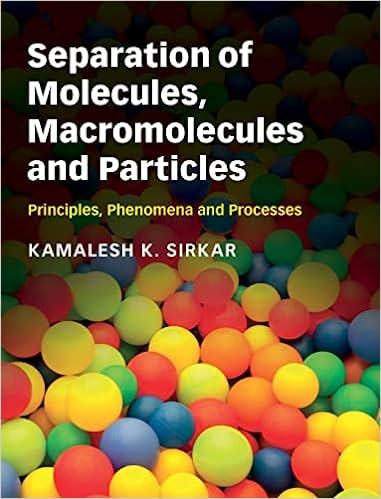Answered step by step
Verified Expert Solution
Question
1 Approved Answer
Q2. A non-porous catalyst is used for the following irreversible reaction: A(g)B(g)+C(g) bed has a voidage of 0.4 . The gas that enters the reactor

Q2. A non-porous catalyst is used for the following irreversible reaction: A(g)B(g)+C(g) bed has a voidage of 0.4 . The gas that enters the reactor is mostly an inert gas. Only 0.2v/V% of the feed stream is A. The feed stream is at 700C and 4 bar. The reactor is fed with 1m3/s of gas. The reactor is cylindrical with an internal diameter of 25cm and a length of 1m. The gas stream has a viscosity ()2105kg/m.s and the molecular weight of the inert gas is 40g/mol. The diffusivity of A in the inert gas is 0.3cm2/s. The recommended correlation for the mass transfer coefficient at these conditions is below. jD=StDSc2/3=ukm(DAB)2/3=b0.455(udP)0.407 Determine the following: a) If the surface reaction, adsorption/desorption, and internal transport in the catalyst particle are assumed to be very fast compared with the external mass transfer, what would be the conversion of A at the exit of the reactor? b) If a reactor with the same configuration as part (a) was run and the conversion was 10% less (e.g. 83%73% ) than the conversion in part (a), what is the k for the catalyst (/s2m2) ? Continue to assume that the adsorption/desorption, and internal transport are fast and do not impact reaction kinetics and that the surface reaction is first order
Step by Step Solution
There are 3 Steps involved in it
Step: 1

Get Instant Access to Expert-Tailored Solutions
See step-by-step solutions with expert insights and AI powered tools for academic success
Step: 2

Step: 3

Ace Your Homework with AI
Get the answers you need in no time with our AI-driven, step-by-step assistance
Get Started


